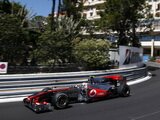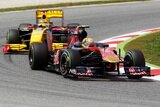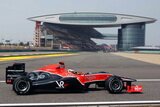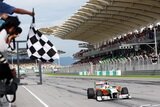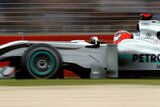The FIA has asked the teams to come up with proposed regulation changes to bring down the price of competing, but has also put forward a number of its own suggestions, one being a possible switch to standardised engines from 2010.
Along with the meeting agenda, the FIA has released an explanatory note providing further details of its proposals:
AGENDA
Costs
1. The need to reduce costs
2. Budgetary targets
Power train
1. Plans for 2013
2. An interim engine for 2010 – 2012 inclusive
3. Interim measures for 2009
4. Performance differentiators
Chassis
1. Common parts
2. Other measures to reduce costs
3. Performance differentiators
Race Procedures
1. Measures to reduce the cost of going racing
2. Facilities available to teams
3. Pit lane layout
EXPLANATORY NOTE
Costs
The FIA believes that Formula One costs are unsustainable. Even before current global financial problems, teams were spending far more than their incomes, insofar as these consist of sponsorship plus FOM money. As a result, the independent teams are now dependent on the goodwill of rich individuals, while the manufacturers teams depend on massive hand-outs from their parent companies.
There is now a real danger than in some cases these subsidies will cease. This could result in a reduction in the number of competitors, adding to the two team vacancies we already have and reducing the grid to an unacceptable level.
The FIAs view is that Formula One can only be healthy if a team can race competitively for a budget at or very close to what it gets from FOM.
We should like to hear the teams views on this together with comments on the FIAs proposals (set out below) and other suggestions for the measures which will be necessary if major reductions in cost are to be achieved.
Power train
2013
The FIA would like to see a modern high technology power train in 2013. We envisage a down-sized DI engine with exhaust energy and heat recovery, coupled to an electrically actuated gearbox.
However, we are completely open to new ideas. The only preconditions are (i) that the costs of development, maintenance and unit production for the power train must be an order of magnitude lower than is currently the case and (ii) power trains must be available to independent teams at minimal cost.
2010- 2012 inclusive
At present we can offer three options.
Option 1
A homologated engine produced by a single supplier after an invitation to tender, with the current suppliers free to build an identical engine themselves (but not the gearbox), subject to rigorous controls.
Option 2
A consortium of teams obtains an engine to current rules but at much lower cost from a single supplier. Engines from other sources to be subject to rigorous controls to eliminate differences in performance.
Option 3
A proposal from FOTA, backed by solid guarantees, for the supply of complete power trains to independent teams for less than €5 million per team per season to include 30,000 km of testing and all on-track assistance.
2009
When the decision was taken to “freeze” the engines, certain teams asked for and got a period of time in which to address reliability problems and re-tune for 19,000rpm. Some teams took advantage of this period to improve the power output of their engines. This was not intended. Other teams did not improve their engines, believing performance to have been “frozen”. This has produced unfair and inequitable differences in performance. The World Motor Sport Council has therefore decided that engine performance will be equalised in accordance with the 2009 Sporting Regulations in order to re-establish the position as it was when the freeze was agreed.
The FIA would like to discuss with FOTA technicians how best to achieve equalisation in a way which is fair to all and involves minimal cost.
The Chassis
The FIA envisages common parts for numerous areas of the chassis. For example, standard suspension and wheels (ie standard “corners“), a standard underbody and other parts which are currently the subject of major expenditure but add nothing to the spectacle or to the public interest of Formula One.
Other measures, such as a minimum height for the centre of gravity, restrictions on the use of certain materials or the homologation of certain major components (eg the “tub“) for a period of time, may also be appropriate.
We invite FOTA to make proposals together with a time scale for introduction.
Race procedures
The FIA would welcome suggestions for changes to the rules for going racing, with a view to reducing costs. We believe that priority should be given to things which the public cannot see (eg telemetry) rather than visible parts of “the show” (eg refuelling during the race).
The FIA would also like to hear teams views about the distribution of garage space and space in the pit lane.
Comments:


